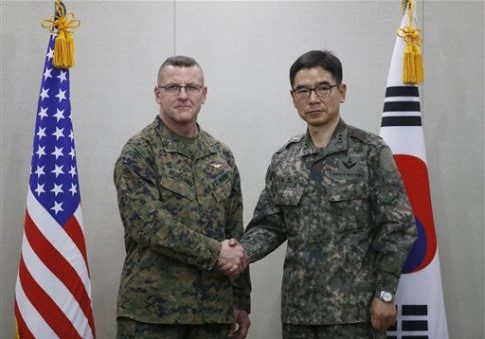South Korean officials announced Wednesday that an advanced U.S. missile defense system will be set up in a southeastern farm town to protect against North Korea’s missile and nuclear threats.
The plan has angered North Korea and China, along with local residents who are concerned about potential health risks that could be caused by the radar system of the Terminal High-Altitude Area Defense, or THAAD.
Thousands of Seongju residents, where the U.S. system will be deployed, demanded that the government walk back its decision. Some local leaders sent letters of protest written in blood to the Defense Ministry.
"We oppose with our lives the THAAD deployment," one of the letters said.
South Korea and the U.S. announced last Friday that they had decided to deploy a THAAD system in South Korea to defend against the North. Neighboring China, North Korea’s strongest ally, quickly condemned the decision.
The South Korean Defense Ministry said it chose to deploy the system to rural Seongiu, which is home to 45,000 people, to maximize effectiveness while minimizing risks to residents and the environment.
"By operating the U.S. THAAD battery in Seongju, we will be able to better protect one half to two-thirds of our citizens from North Korean nuclear and missile threats," the ministry said in a statement.
"It will dramatically strengthen the military capabilities and readiness to defend critical national infrastructure such as nuclear power plants and oil storage facilities, as well as the military forces of the South Korea-U.S. alliance."
The defense ministry said the system will be active by the end of 2017.
North Korea warned Monday that it would take "physical" retaliation measures once the location for THAAD was determined.
China and Russia oppose the THAAD deployment because they say it will give the U.S. the ability to track missiles in their countries with its radar system.
U.S. officials say the missile system is defensive and only meant to protect against threats from North Korea.
